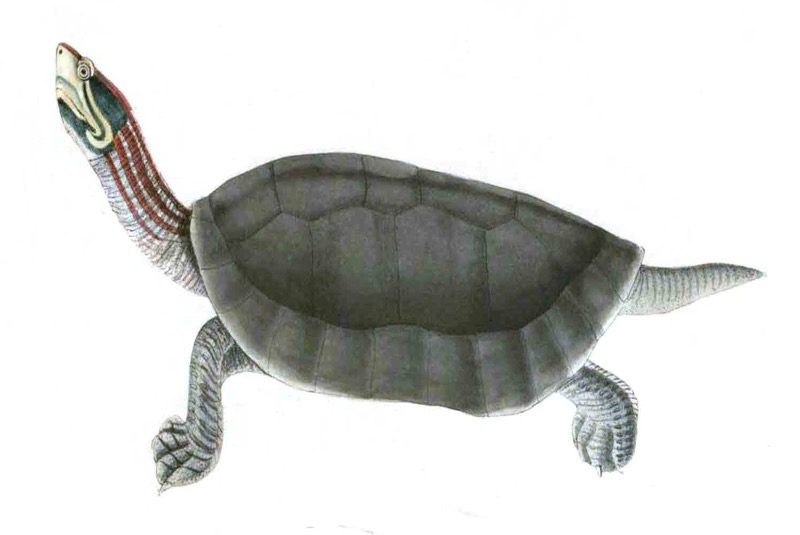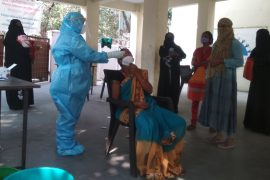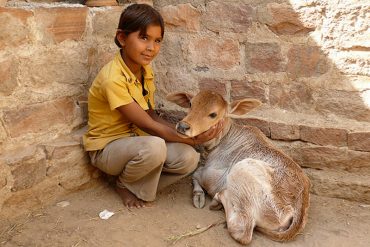It is no secret that pollution and global warming are slowly destroying the earth’s ecology, and the consequences are now staggeringly visible. Amongst these consequences is the loss of habitat for many endangered species, including the Bengal roof turtle.
Also known as the Red-Crowned Roofed Turtle or Batagur Kachuga, these freshwater turtle species are endemic to South Asia. This turtle was formerly widespread in central Nepal, northeastern India, Bangladesh, and perhaps Burma. However, its population has declined from being captured for flesh and shells, drowned in fishing nets, water pollution, hydroelectric projects, and habitat degradation. According to a recent study, less than 400 adult females are estimated to survive in the wild.
Kachuga has been listed as a Critically Endangered species by the IUCN Red List and on Schedule I of the Indian Wildlife Protection Act (IWPA). The species have also been listed in Appendix II of the Convention on International Trade in Endangered Species of Wild Fauna and Flora (CITES).
The Bengal roof turtle used to be the type species of its former genus, Kachunga. Females may reach a shell length of 56 centimetres (22 in) and a weight of 25 kilogrammes (55 lb), while males are much smaller. On the shores, turtles like basking in the sun.
Males’ faces and necks acquire a magnificent courting colouring of red, yellow, white, and blue during the breeding season, toward the conclusion of the rainy season. During the nesting season, which lasts from February to March, females build nests in river sandbanks and deposit an average of 17 eggs. After three months of incubation, hatchlings emerge.
The juveniles have a heavily keeled carapace. On the second and third vertebral shields, the keels are tubercular posteriorly. The rear border is strikingly crenulated. The marginal serrature fades in adolescent specimens, and the vertebral keel, which had been reduced to a series of low knobs, vanishes entirely in the full-grown, whose carapace is exceptionally convex.
The nuchal shield is tiny, trapezoidal, and widest towards the back. The first vertebral is as wide or wider in front as behind. The second vertebral segment is longer than the third, forming a straight transverse suture. The fourth is the longest and joins the third in a wide suture. In the juvenile, the second vertebral is wider than long; in the adult, it is as long as it is broad. In the young, the plastron is angulated laterally. The anterior and posterior lobes are narrower and shorter than the bridge’s breadth, truncate anteriorly, and are visibly notched posteriorly.
The median suture between the abdominals is the longest, while the smallest is between the gulars, about half the length of the suture between the humeral. The suture between the gulars and the humerals, as well as the suture between the humerals and the pectorals, creates an obtuse angle. The inguinal is larger than the axillary.
The head is medium in stature, with an oblique and pronounced nose. The margins of the jaws are denticulated, with the top notched mesially. The alveolar surfaces are extremely wide, with the upper jaw’s median ridge somewhat closer to the outside than the inner border. Choanae are located behind the line of the orbits’ posterior boundaries. The diameter of the orbit is equal to the breadth of the lower jaw at the symphysis. The limbs feature transversely expanded, band-like scales that are brown on top and yellowish on the bottom. Longitudinal red lines go across the nape.
The National Chambal Sanctuary on the banks of the Chambal River is the species’ only feasible habitat. Since 1979, it has received limited protection as India’s sole protected riverine environment. However, even in this area, Bangal roof turtles are uncommon.
It was discovered that the population of this turtle has decreased significantly after years of census surveys and nesting site monitoring by the International Union for Conservation of Nature (IUCN). The most important cause was human intervention, which resulted in habitat degradation due to sand mining, illicit fishing, and egg and meat poaching.
Communities have increased demands on the environment to augment their poor wages. In 2017, 23 red-crowned roof turtles were discovered in the baggage of international traffickers, suggesting that the species is also in danger from outside sources.
The economy of the area housing the turtles is mostly agricultural. However, a shortage of irrigation water makes agriculture less productive, and riparian people turn to other occupations to augment income.
Fishing, sand collecting, and selling Prosopis juliflora wood are examples of illegal activity. Dependence on these livelihoods, particularly in the sanctuary region, creates community livelihood instability and negatively affects riverine ecosystems, associated animals, and riparian trees.
The Turtle Survival Alliance and the state forest departments of Uttar Pradesh and Madhya Pradesh collaborated to establish a ‘head start’ conservation initiative in 2005. The initiative works closely with local people to understand the interaction between them and aquatic animals and to offer alternative livelihoods to minimise human-induced pressure on turtles and their environment. It is part of a larger Indian Turtle Conservation Program that is dedicated to the Community Conservation method used in many nations.
The survey data was utilised by the IUCN to directly contradict the widely held community belief that turtles have always been there, are present today, and will always be present for future generations. The over-40s gradually accepted that there were fewer turtles than when they were younger, while the under-40s who had not seen the turtles questioned their existence.
The organisation concentrated on raising community knowledge about the dangers that the species faces and why it is essential to preserve the species from extinction. Children’s books with engaging tales that share conservation lessons are being distributed across the riverfront school and have been warmly welcomed by teachers and kids alike. The significance of the existence of turtles has been spread as they assist in cleaning the aquatic environment by eating decaying organic waste and sick fish.
However, the issue persists since safeguarding beaches from egg and adult turtle harvest comes at the expense of lost livelihoods and a local food supply. The major challenge is to develop and implement sustainable economic mechanisms that produce continuous revenue through conservation zoning.
-30-
Copyright©Madras Courier, All Rights Reserved. You may share using our article tools. Please don't cut articles from madrascourier.com and redistribute by email, post to the web, mobile phone or social media.Please send in your feed back and comments to editor@madrascourier.com











